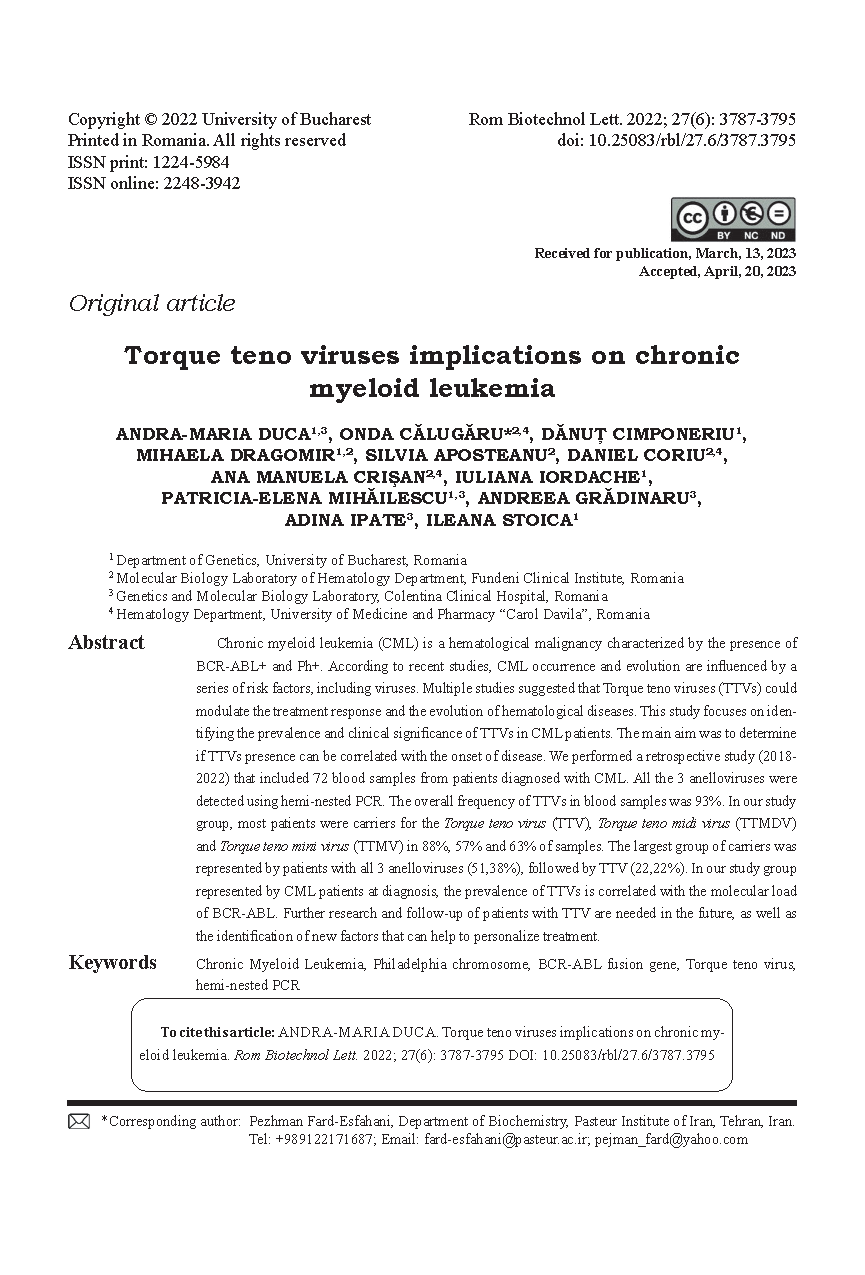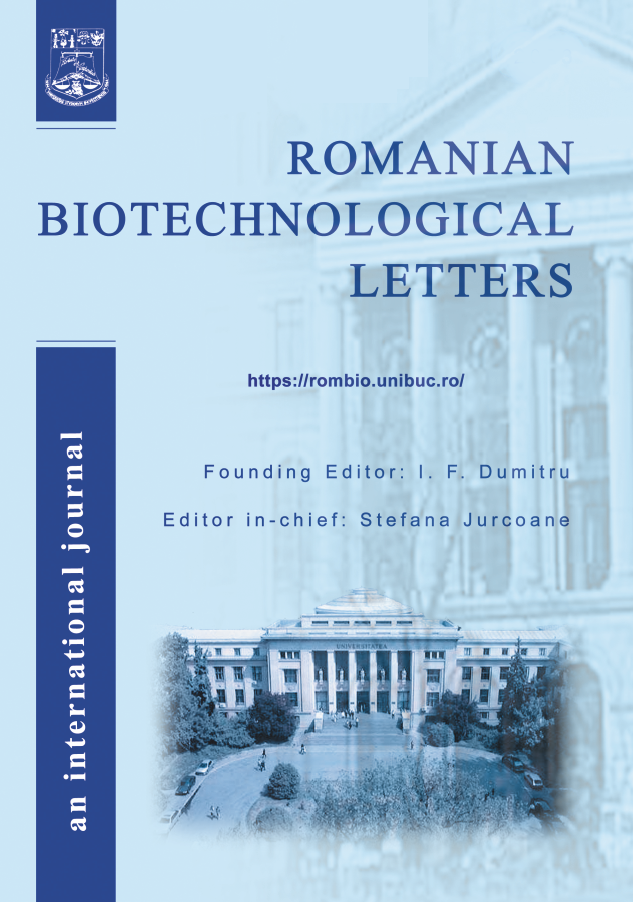Torque teno viruses implications on chronic myeloid leukemia
DOI:
https://doi.org/10.25083/rbl/27.6/3787.3795Cuvinte cheie:
Chronic Myeloid Leukemia, Philadelphia chromosome, BCR-ABL fusion gene, Torque teno virus, hemi-nested PCRRezumat
Chronic myeloid leukemia (CML) is a hematological malignancy characterized by the presence of BCR-ABL+ and Ph+. According to recent studies, CML occurence and evolution are influenced by a series of risk factors, including viruses. Multiple studies suggested that Torque teno viruses (TTVs) could modulate the treatment response ant the evolution of hematological diseases. this study focuses on identifying the prevalence and clinical significance of TTVs in CML patiennts. The main aim was to determine if TTVs presence can be correlated with the onset of disease. We performed a retrospective study (2018-2022) that included 72 blood samples from patients diagnosed with CML. All the 3 anelloviruses were detected using hemi-nested PCR. The overall frequency of TTVs in blood samples was 93%. In our study group, most patients were carriers for the Torque teno virus (TTV), Torque teno midi virus (TTMDV) and Torque teno mini virus (TTMV) in 88%, 57% and 63% of samples. The largest group of carriers was represented by patients with all 3 anelloviruses (51,38%), followed by TTV (22,22%). In our study group represented by CML patients at diagnosis, the prevalence of TTVs is correlated with the molecular load of BCR-ABL. Further research and follow-up of patients with TTV are needed in the future, as well as the identification of new factors that can help to personalize treatment.




